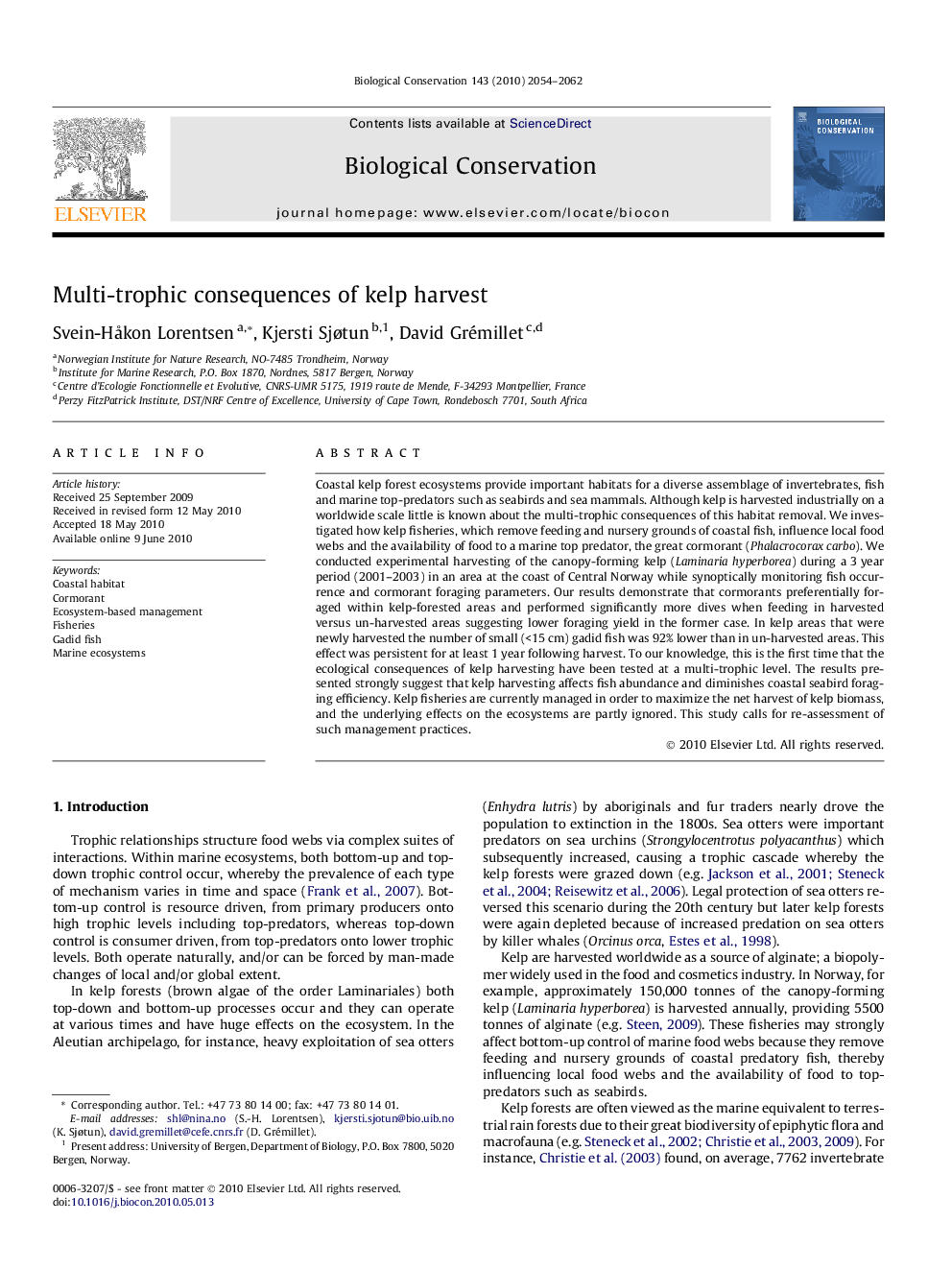| کد مقاله | کد نشریه | سال انتشار | مقاله انگلیسی | نسخه تمام متن |
|---|---|---|---|---|
| 4385812 | 1304550 | 2010 | 9 صفحه PDF | دانلود رایگان |

Coastal kelp forest ecosystems provide important habitats for a diverse assemblage of invertebrates, fish and marine top-predators such as seabirds and sea mammals. Although kelp is harvested industrially on a worldwide scale little is known about the multi-trophic consequences of this habitat removal. We investigated how kelp fisheries, which remove feeding and nursery grounds of coastal fish, influence local food webs and the availability of food to a marine top predator, the great cormorant (Phalacrocorax carbo). We conducted experimental harvesting of the canopy-forming kelp (Laminaria hyperborea) during a 3 year period (2001–2003) in an area at the coast of Central Norway while synoptically monitoring fish occurrence and cormorant foraging parameters. Our results demonstrate that cormorants preferentially foraged within kelp-forested areas and performed significantly more dives when feeding in harvested versus un-harvested areas suggesting lower foraging yield in the former case. In kelp areas that were newly harvested the number of small (<15 cm) gadid fish was 92% lower than in un-harvested areas. This effect was persistent for at least 1 year following harvest. To our knowledge, this is the first time that the ecological consequences of kelp harvesting have been tested at a multi-trophic level. The results presented strongly suggest that kelp harvesting affects fish abundance and diminishes coastal seabird foraging efficiency. Kelp fisheries are currently managed in order to maximize the net harvest of kelp biomass, and the underlying effects on the ecosystems are partly ignored. This study calls for re-assessment of such management practices.
Journal: Biological Conservation - Volume 143, Issue 9, September 2010, Pages 2054–2062